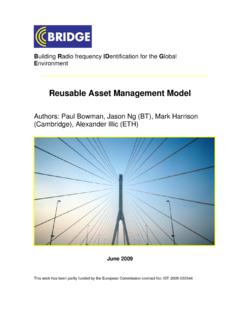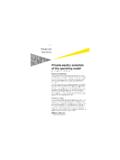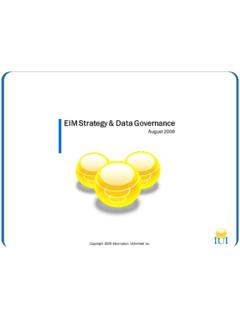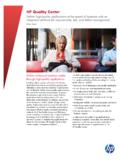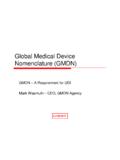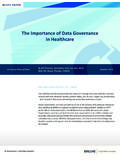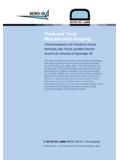Transcription of Returnable Transport Items: the market for EPCglobal ...
1 Building Radio frequency IDentification for the Global Environment Returnable Transport Items: the market for EPCglobal applications Authors: GS1 France and WP9 partners 11 July 2007 This work has been partly funded by the European Commission contract No: IST-2005-033546 About the BRIDGE Project: BRIDGE (Building Radio frequency IDentification for the Global Environment) is a 13 million Euro RFID project running over 3 years and partly funded ( 7,5 million) by the European Union. The objective of the BRIDGE project is to research, develop and implement tools to enable the deployment of EPCglobal applications in Europe.
2 Thirty interdisciplinary partners from 12 countries (Europe and Asia) are working together on : Hardware development, Serial Look-up Service, Serial-Level Supply Chain Control, Security; Anti-counterfeiting, Drug Pedigree, Supply Chain Management, Manufacturing Process, Reusable Asset Management, Products in Service, Item Level Tagging for non-food items as well as Dissemination tools, Education material and Policy recommendations. For more information on the BRIDGE project: This document: In the wide range of assets, work package 9 focuses on logistics assets also called "RTIs" or Returnable Transport Items.
3 As stated in the ISO definition (see the glossary of terms for the complete definition and reference), RTIs are "..means to assemble goods for transportation, storage, handling and product protection in the supply chain which are returned for further " The scope of this document is to describe the market and identify its weaknesses and strengths Disclaimer: This document results from work being done in the framework of the BRIDGE project. It does not represent an official deliverable formally approved by the European Commission. Copyright 2007 by GS1 France, GS1 Germany, Benedicta, COSG (Carrefour), All rights reserved.
4 The information in this document is proprietary to these BRIDGE consortium members This document contains preliminary information and is not subject to any license agreement or any other agreement as between with respect to the above referenced consortium members. This document contains only intended strategies, developments, and/or functionalities and is not intended to be binding on any of the above referenced consortium members (either jointly or severally) with respect to any particular course of business, product strategy, and/or development of the above referenced consortium members.
5 To the maximum extent allowed under applicable law, the above referenced consortium members assume no responsibility for errors or omissions in this document. The above referenced consortium members do not warrant the accuracy or completeness of the information, text, graphics, links, or other items contained within this material. This document is provided without a warranty of any kind, either express or implied, including but not limited to the implied warranties of merchantability, satisfactory quality, fitness for a particular purpose, or non-infringement. No licence to any underlying IPR is granted or to be implied from any use or reliance on the information contained within or accessed through this document.
6 The above referenced consortium members shall have no liability for damages of any kind including without limitation direct, special, indirect, or consequential damages that may result from the use of these materials. This limitation shall not apply in cases of intentional or gross negligence. Because some jurisdictions do not allow the exclusion or limitation of liability for consequential or incidental damages, the above limitation may not apply to you. The statutory liability for personal injury and defective products is not affected. The above referenced consortium members have no control over the information that you may access through the use of hot links contained in these materials and does not endorse your use of third-party Web pages nor provide any warranty whatsoever relating to third-party Web pages.
7 BRIDGE Building Radio frequency IDentification solutions for the Global Environment 3/49 1 4 2 5 3 EXECUTIVE 6 6 6 6 4 THE 7 HOW IT WAS 7 SEE THE QUESTIONNAIRES IN ANNEX 7 WHO REPLIED TO THE QUESTIONNAIRES?.. 7 Producers and Pool 9 THE FINDINGS OF THE 10 10 RTI pool 15 5 PROCESS 17 HOW TO READ A USE CASE 17 HOW TO READ AN ACTIVITY 17 POOLING 17 Use case 18 Activity diagram for Deliver 19 Activity diagram for Deliver Containerised 21 Activity diagram for Return 21 Activity diagram for 23 Activity diagram for Get Back the 25 EXCHANGE 32 Use case 32 Activity diagram for Exchange RTIs between producer and 33 Activity diagrams for Exchange RTIs between carrier and goods 34 6 STRENGTHS AND WEAKNESSES
8 OF THE 38 POOLING 38 38 39 EXCHANGE 39 39 40 41 41 41 41 7 GLOSSARY OF 42 8 ANNEX A 1 PRODUCER 43 9 ANNEX A2 POOL OPERATOR 46 BRIDGE Building Radio frequency IDentification solutions for the Global Environment 4/49 1 Introduction Work package 9 addresses asset management and how EPCglobal applications can provide efficient tools to improve it. In the wide range of assets, work package 9 focuses on logistics assets also called "RTIs" or Returnable Transport Items. As stated in the ISO definition (see the glossary of terms for the complete definition and reference), RTIs are ".
9 Means to assemble goods for transportation, storage, handling and product protection in the supply chain which are returned for further " Commonly used RTIs in the retail industry are pallets, crates, roll cages and dollies. Because the Work package 9 work group is mainly composed of French users, the group decided to target the type of assets that are mainly used in this country, namely pallets and crates. There are currently three processes for RTIs: 1. The supplier owns the RTIs and there are no special markings that make them specific to the supplier nor the RTIs are made to fit defined products.
10 For example, EURO pallets fall in this process. In that case, RTIs are exchanged one for one between all the actors of the supply chain. 2. The supplier owns the RTIs that are specific to the supplier of the contained goods. For example, bottle crates bear the brand name of the product; crates are designed to carry a defined product. In this case, RTIs are to be returned to the supplier. 3. A pool operator owns the RTIs. A pool operator is a company that provides RTIs to suppliers and make sure that the quality and quantity of these RTIs match the supplier requirements.
